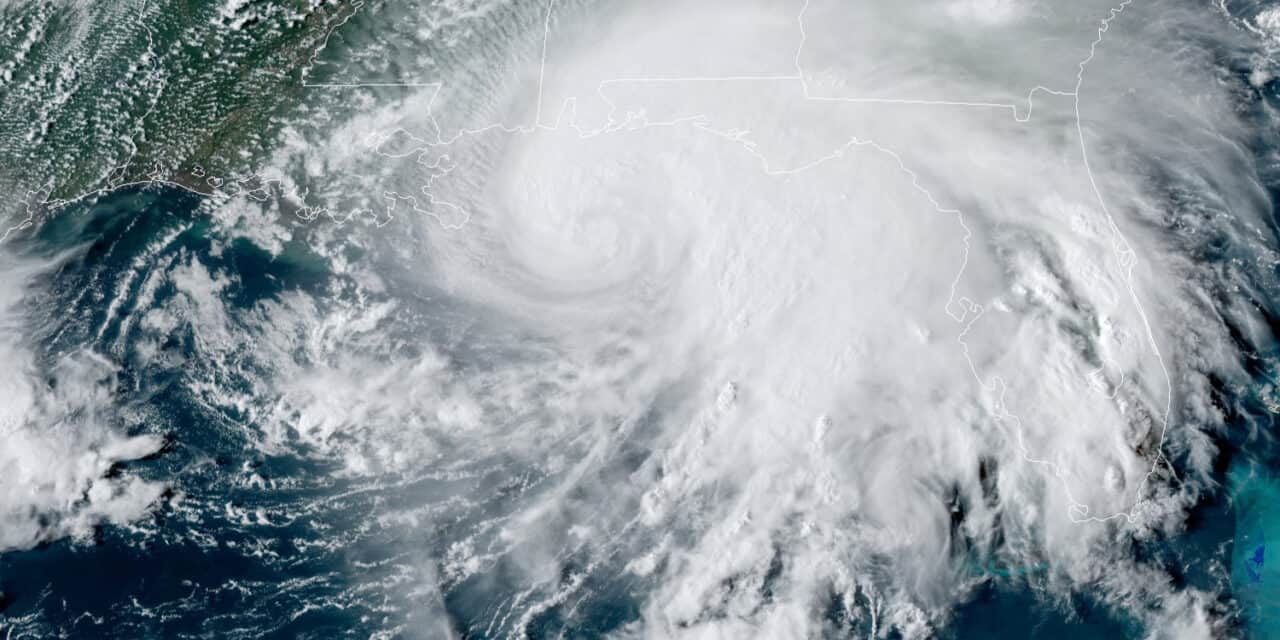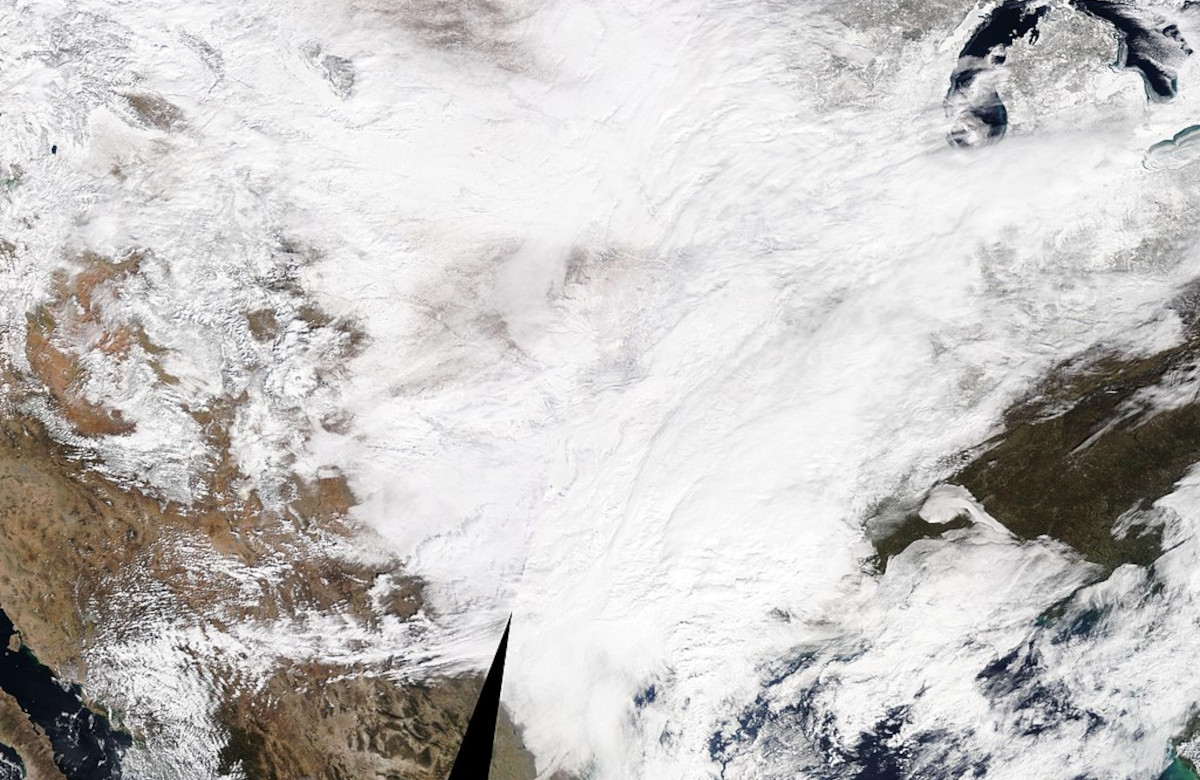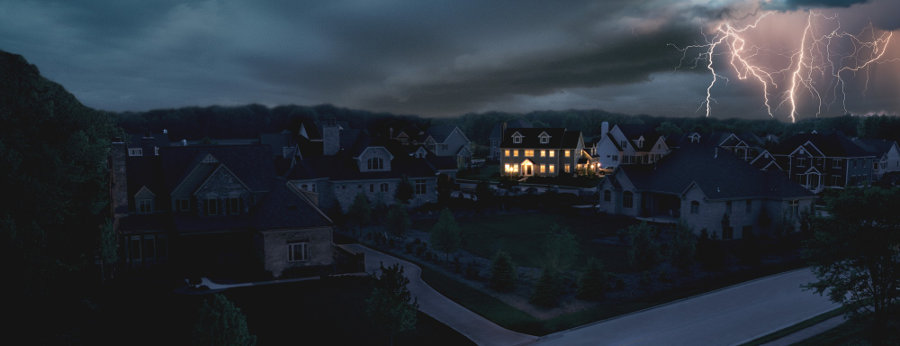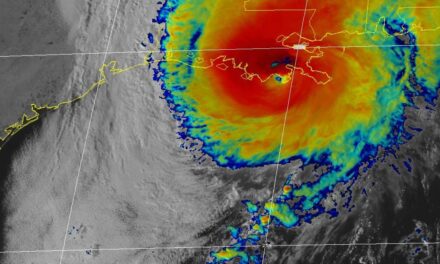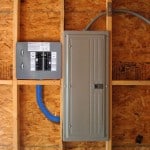Planet Earth wears a face mask as hurricanes and tropical storms spin over the Pacific Ocean, Hot Dry Windy Weather prevails in the West while Severe Weather Threatens the Great Lakes, and another Hurricane in the north central Atlantic Ocean.
Image by Alexandra Koch
Standby Generator Supply Chain Woes Affect Everyone from Manufacturer to Homeowner
In the summer of 2020, manufacturer ship dates for automatic standby generators began to slip from days to weeks as delayed shipments of critical supplies and materials impacted production. Higher than usual demand put a strain on inventory. By January of 2021, delivery schedules of product from manufacturers to resellers had gone from a few weeks up to nine months or longer.
The delays have roots in the global pandemic, the record hurricane season, and other weather events and emergencies with power outages lasting weeks. Climate change, some say, is directly responsible for the extreme weather over the last decade, and specifically over the last six years.
COVID-19 Pandemic
A stay-at-home employee wears a mask in the confines of her apartment during the COVID-19 Pandemic.
Usually, if the power goes out for an hour or two during the day, many people don’t notice. They are at work and by the time they get home, the power is back on. They set their clocks to the right time and forget that it happened. These short outages caused by brief, local weather events, accidents, or wildlife are minor and utility companies typically able restore power quickly.
In March of 2020, the country took the first steps to mitigate the onslaught of the global COVID-19 pandemic. All but the most essential businesses were closed. Businesses that remained open were forced to comply with occupancy restrictions and mask mandates. Grocery stores experienced panic buying that exasperated supply chain problems. Restaurants shifted from sit-down dining to delivery and curbside service requiring new packaging options. The sudden change caused a shortage of “To Go” packaging supplies.
How to Prepare for a Power Outage
Workers that previously spent their days in company offices found themselves setting up at home and attending meetings via Zoom or other video conferencing methods. Children were forced to stay home from school. Distance Learning and Distance Teaching became the new classroom. Work from home parents set up learning spaces for children. Most daycare centers were closed.
Power outages lasting a few minutes up to two or three hours were no longer inconsequential annoyances but a serious issue threatening the livelihood of those working from home, especially those working in small business, and it disrupted education. Orders for the most popular air cooled standby generators increased.
‘I’ll lose my unemployment benefits if I go to work. After taxes, the job pays less than unemployment. I can’t afford to work for you.’
Hiring new employees at a time when so many were out of work proved more difficult than usual. Many lost their jobs as gubernatorial and presidential executive orders forced small businesses to close. Forced out of work, extended and enhanced unemployment benefits reduced incentives to find new jobs. Businesses would interview and hire new employees, only to have the new hires not show up for the first day on the job.
One business owner trying to fill positions that paid almost double the minimum wage asked a no-show hire to explain. They said, ‘I’ll lose my unemployment benefits if I go to work. After taxes, the job pays less than unemployment. I can’t afford to work for you.’
Supply Chain Issues
Thousands of Shipping Containers stuck at the Port of Los Angeles await pickup by truck or rail. Shipping container delays and lack of space in the ports have more than 60 ships waiting in line to offload their cargo. Photo via Pixabay.
As businesses and people shifted to working and learning from home, they purchased consumer electronics like laptops and routers, monitors, and other work-related electronics. With more free time on their hands, some people turned to gaming consoles for entertainment. Others bought home theater systems.
For example, a household with two parents and three children might have purchased four or five laptops and some additional equipment, plus a game console to keep the kids occupied after school. Less dining out and fewer fast food lunches may have freed up enough money for a new, bigger television.
Backup Generator Needed for Outages – FEMA
Consumers surprised the automotive industry by purchasing more vehicles instead of less. Inventory of parts fell because suppliers were unprepared for more orders.
Meanwhile, global microchip production fell when Asian chip plants were shuttered due to outbreaks of the virus. Reduced production directly affected the auto industry and spread to consumer electronics.
The Microchip shortages also affected the generator industry. Shortages of these critical components continue. One manufacturer is shipping generators without WiFi capability to fill orders and reduce backlog. As the chips become available, they send an easy to install module directly to the consumer.
Shortages of microchips are just one example of how the pandemic affected natural gas generator manufacturing supply chains. Another factor that impacted supply chains and manufacturing: Generator and other manufacturing facilities were not designed for social distancing which slowed production and impacted supply chains and manufacturing processes.
Climate Change and Electrical Power
Hurricane Sally was one of five tropical cyclones to hit Louisiana in 2020. The slow-moving Category 2 storm caused 5 fatalities and 7.3 Billion in damages. Hurricanes cause widespread, long-lasting power outages. NOAA Satellite Photo September 2020.
Severe weather often causes power outages and the public responds by purchasing generators. When the utility can’t keep your refrigerator or sump pump working, the pipes are freezing in winter or the heat makes life unbearable, the solution of choice is a natural gas or LP propane home backup generator that can restore power automatically in seconds.
The decade from 2010 to 2019 had eight seasons of above average hurricane activity with 2010, 2011, 2012 all tying as fourth most active with 1995 and 1887. 2015 was the first of seven consecutive seasons to begin before the official June 1 start date.
In 2020, the above average activity peaked with 31 tropical cyclones and 30 named storms, more than twice the number in an average year.
As the 2020 Hurricane Season Forecast for an exceptionally active season turned into factual data and every storm after the third set a new record, homeowners responded by ordering whole house standby generators. By August 2020, manufacturer shipments to dealers and installers were falling behind as the global supply chain failed to keep pace with orders and continued to fail through the New Year.
Severe Weather and COVID-19 Impact Generator Shipments
Less than two weeks after the November 30 close of the 2020 Hurricane Season, the Colorado State University Tropical Meteorology Project issued a 2021 Hurricane Season Outlook similar to the one issued a year earlier. The surge in standby generator sales continued.
In September 2021, the NOAA announced the formation of another La Nina in the eastern tropical Pacific Ocean. Cooler ocean surface waters in the eastern Pacific tend to increase tropical cyclone activity in the Atlantic Basin. The 2022 Hurricane Season will likely produce above average activity, the seventh consecutive season above the 30-year average.
Not Just Hurricanes
Winter Storm Viola traversed the United States and contributed to the Texas Freeze disaster. NOAA Satellite Photo.
The 2018 California “Camp Fire” wildfire was blamed for 85 casualties, the loss of more than 18,000 homes and other structures, and the destruction of tens of thousands of acres. Faulty transmission equipment on a 115-kilovolt transmission line was the cause of the fire. Pacific Gas & Electric, the largest energy utility in California, declared bankruptcy as allegations of neglect and fault were leveled at the company. The utility plead guilty to 85 counts of involuntary manslaughter after failing to adequately maintain their equipment.
In 2019, the utility announced the largest planned blackout in U.S. history and shut off power to more than 750,000 utility customers and at least 1.5 million people in the midst of a record heat wave. Deliberate blackouts in areas with red flag warnings helped prevent faulty equipment from sparking new fires. Despite the blackouts, faulty equipment continues to cause new fires.
The 2021 Texas Freeze was another power outage disaster when plummeting temperatures following Winter Storm Uri caused utility equipment to freeze. Rolling blackouts were planned to prevent an all-out disaster, but mistakes were made, including shutting off power to natural gas supplies coming from the shale fields. Many Texas residents spent days with no heat, no electricity, and no water. The disaster was blamed for at least 10 deaths.
Future Forecast
A single home with a standby generator has power during a suburban power outage after a severe thunderstorm.
Society and industry will adapt. It’s what humans do. As more of the population receives vaccinations and the virus spreads less, generator manufacturers will catch up with increased production and new, more efficient factories.
Some microchip manufacturers are moving additional production to the United States to minimize the impacts of overseas shipping delays and the whims of government, foreign and domestic.
The climate has always changed and will continue to do so. We might reduce the impacts by changing our energy standards from fossil fuels to wind, solar, and nuclear.
Travis LaVallie at Norwall said, “All the suppliers are facing the same shortages and shortfalls. If you want or need a generator, order it now. We won’t charge your account until we ship. The sooner you order, the sooner you get it.”




